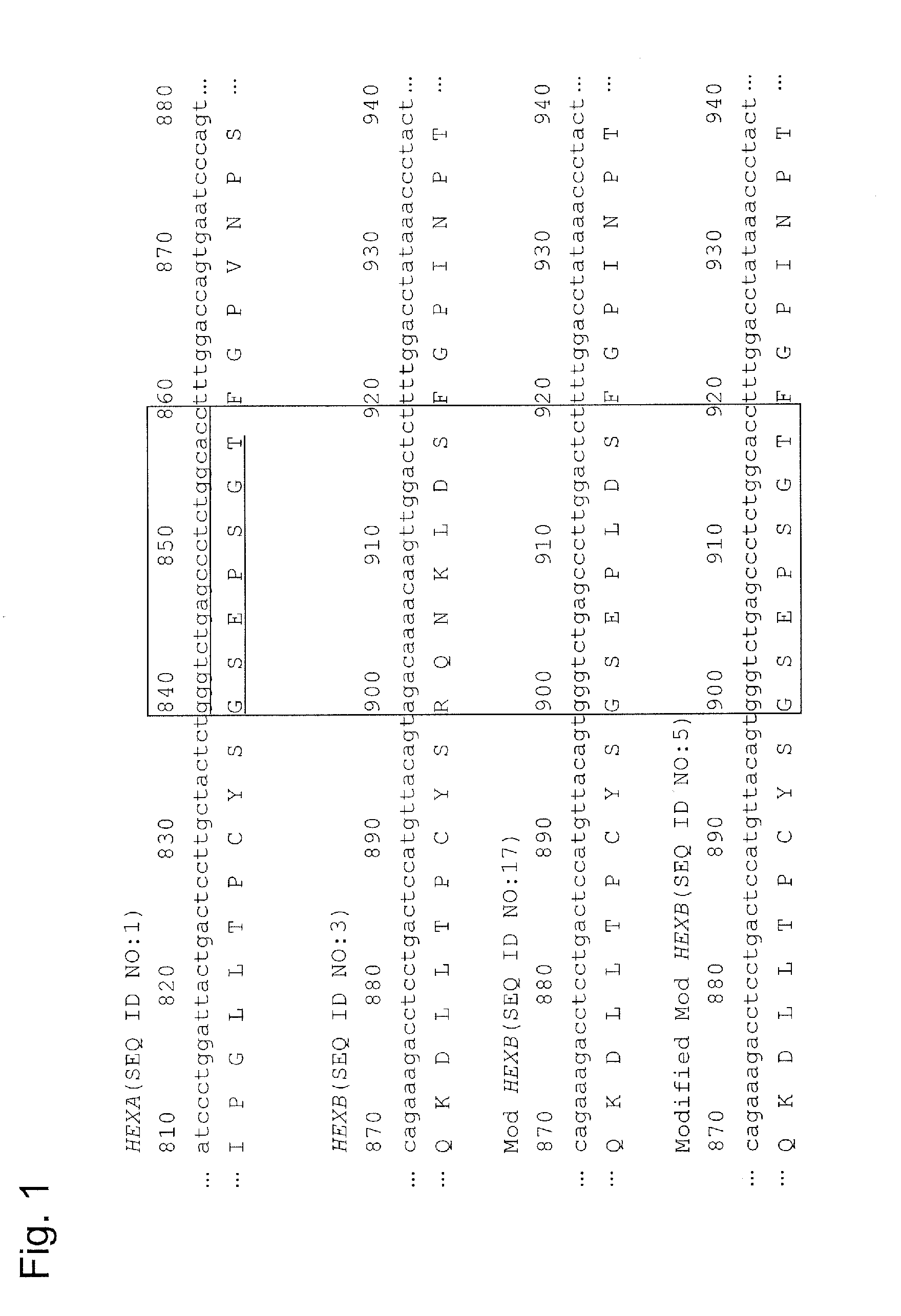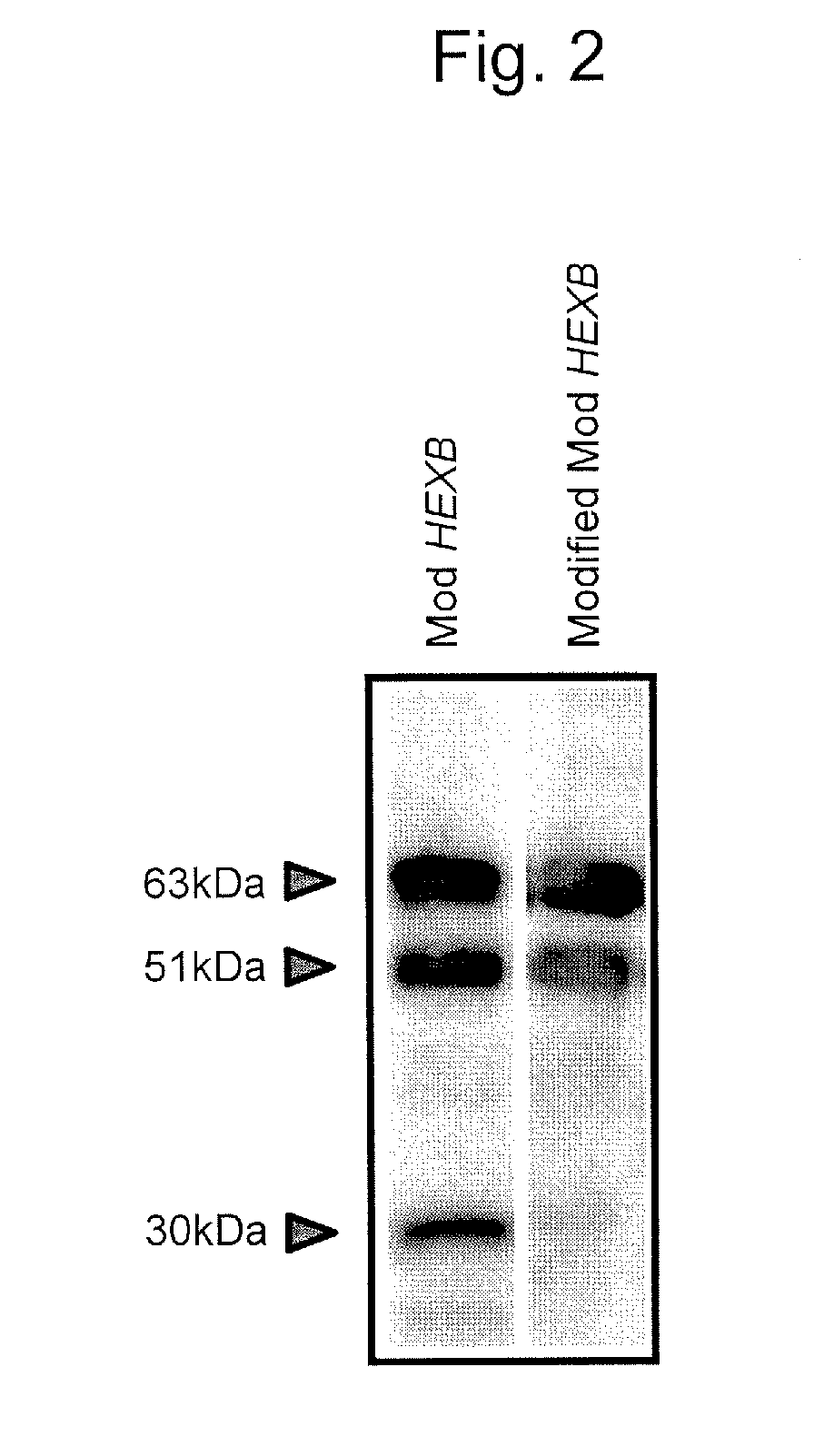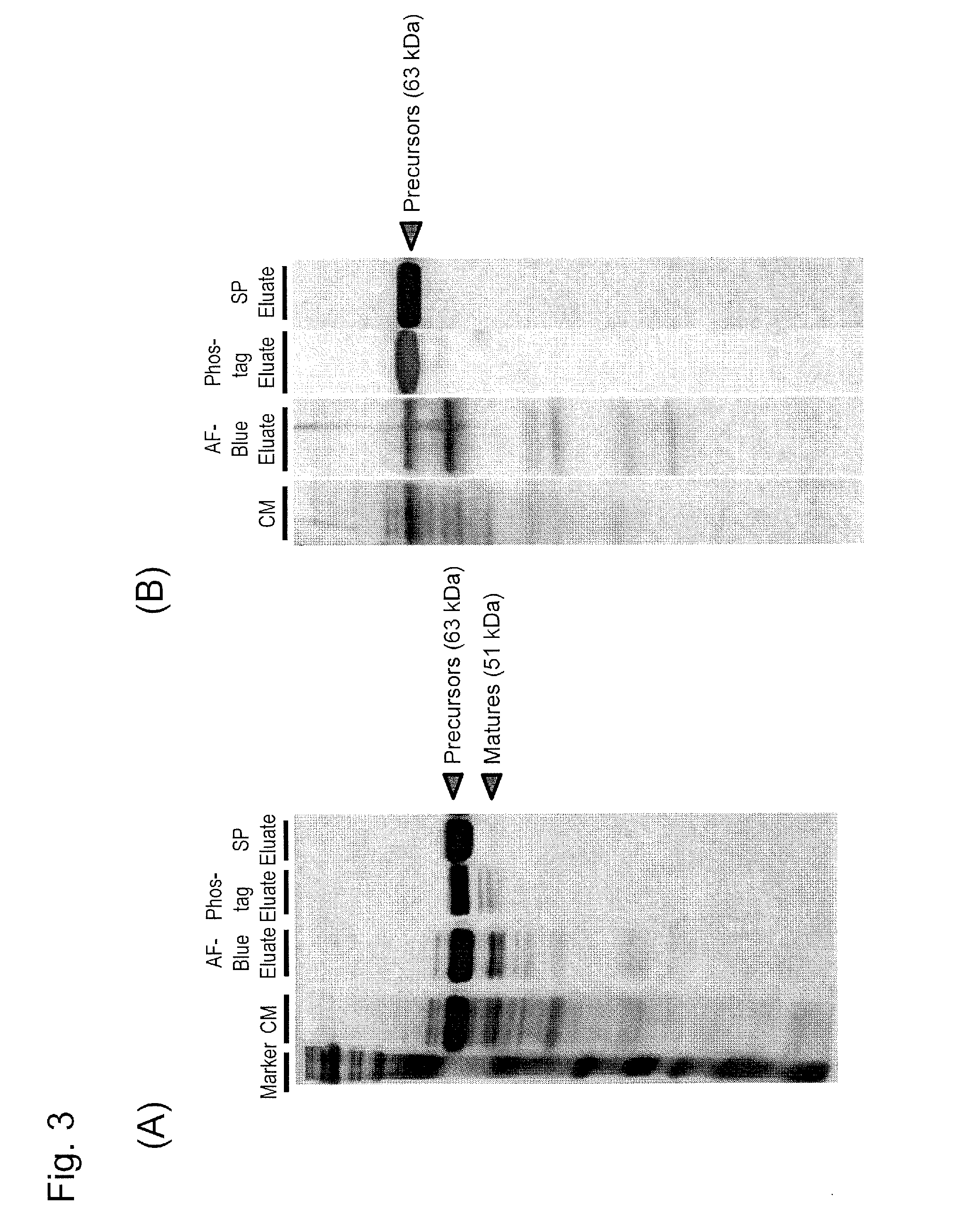Novel high functional enzyme having modified substrate specificity of human ß-hexosaminidase b and exhibiting protease resistance
a technology of ß-hexosaminidase and high functional enzyme, which is applied in the field of recombinant proteins, can solve the problems of low stability in blood (plasma), allergic reaction and anaphylactic reaction in patients, and wild-type recombinant hex
- Summary
- Abstract
- Description
- Claims
- Application Information
AI Technical Summary
Benefits of technology
Problems solved by technology
Method used
Image
Examples
example 1
Preparation of a Modified β-Subunit Having the Activity Derived from an α-Subunit and the Protease Resistance
[0123]A recombinant gene encoding a modified β-subunit which is composed of an amino acid sequence comprising substitutions at the 312th to the 315th amino acids with glycine, serine, glutamic acid and proline in order, respectively and a substitution at the 452nd amino acid with asparagine and a substitution at the 453rd amino acid with arginine in an amino acid sequence of β-subunit, and which has the activity derived from an α-subunit (hereinafter, described as “Mod HEXB”) was produced according to a known procedure (WO2010 / 082622). The obtained recombinant gene (SEQ ID NO: 17) was incorporated into a pCXN2 vector (pCXN2-Mod HEXB).
[0124]Subsequently, in order to obtain a modified Mod HEXB including the corresponding moiety to the region, the region of the α-subunit known to have the protease resistance (the region underlined in FIG. 1) was subjected to PCR method with the ...
example 2
Hex Activity in the Culture Supernatant of a Modified Mod HEXB Expression Cell Strain
[0127]The modified Mod HEXB expression vector produced in Example 1 was introduced into CHO cells with Lipofectamine 2000 (Invitrogen Corporation) and then a cell population which constitutively expressed the genes in the presence of neomycin derivative (G418 sulfate) and which has the drug resistance was selected. Subsequently, CHO clone cell lines highly expressing a modified Mod HEXB was established by limiting dilution method.
[0128]The obtained modified Mod HEXB expression cell strain was cultured in a serum containing medium (10% serum containing Ham's F-10) until it grew confluently. The resultant cell strain was subjected to passage culture in a serum free medium (EXCELL (Sigma)), and further cultured at 37° C., 5% CO2 for 4 days.
[0129]Subsequently, the culture supernatant was recovered and subjected to centrifugation at 3000 rpm for 5 minutes, followed by recovering the supernatant.
[0130]The...
example 3
Assessment of the Protease Resistance of a Modified ModB
[0132]ConA sepharose (GE Healthcare) was used according to the manufacturer's instruction to concentrate and purify the culture supernatant of the modified Mod HEXB expression cell strain obtained in Example 2. Then, the concentrated and purified culture supernatant was electrophoretically migrated by SDS-PAGE and transcribed into a PVDF membrane using a semi-dry type transcription apparatus. The obtained membrane was blocked through Blocking One / TBS=1:1, followed by treating with a first probe (Anti-NAG (A): 1000-fold dilution), a second probe (Biotin-conjugated anti-rabbit IgG: 1000-fold dilution) and a third probe (HRP-conjugated anti-biotin: 1000-fold dilution) in order according to a conventionally known, general procedure. Subsequently, the modified ModB was detected through Western Lightning Plus-ECL (PerkinElmer Co., Ltd.). The culture supernatant of a Mod HEXB expression cell strain was detected as a control in a simil...
PUM
| Property | Measurement | Unit |
|---|---|---|
| Length | aaaaa | aaaaa |
| Length | aaaaa | aaaaa |
| Fraction | aaaaa | aaaaa |
Abstract
Description
Claims
Application Information
 Login to View More
Login to View More - R&D
- Intellectual Property
- Life Sciences
- Materials
- Tech Scout
- Unparalleled Data Quality
- Higher Quality Content
- 60% Fewer Hallucinations
Browse by: Latest US Patents, China's latest patents, Technical Efficacy Thesaurus, Application Domain, Technology Topic, Popular Technical Reports.
© 2025 PatSnap. All rights reserved.Legal|Privacy policy|Modern Slavery Act Transparency Statement|Sitemap|About US| Contact US: help@patsnap.com



